Growing tomatoes is made easy when a few tomato growing tips are followed. Let these “do’s and don’ts” for growing an amazing tomato crop guide you to your most successful tomato harvest ever!
This post may contain affiliate links at no additional cost to you. By making your purchases through the links on this website, IMSL may make a small percentage at no direct cost to you. IMSL only promotes products we use & truly believe in. Please refer to my Privacy & Disclosures for further information. IMSL thanks you for your support!
Growing tomatoes is made easy when a few do’s and don’ts for growing an amazing crop are followed. Successful gardening doesn’t just “happen”. Over time, learning the “in’s and out’s” of vegetable gardening & what works for you in your climate is key to reaping the highest yield crops you possibly can.
Here on the hill we use a LOT of tomatoes each year. We grow a large variety from seed & you can find out how easy it is to do so by visiting “Growing Tomatoes From Seed”. Growing a large tomato crop each year allows us to process and can a wide variety of tomato products for use throughout the year in addition to eating fresh tomatoes throughout the growing season.
SHARING IS CARING ❤️
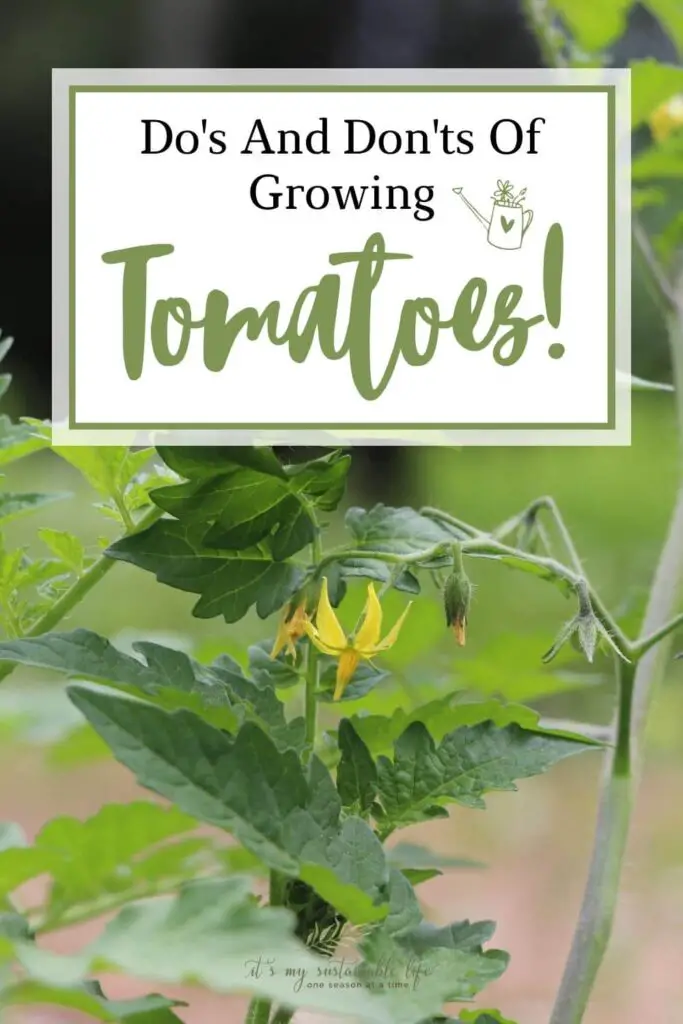
Tomato sauce is a big one for us! We typically put up about 85 quarts of tomato sauce each year to carry us through 😊 Therefore, it’s imperative that we grow as successful a tomato crop as possible to say the least!
Pre-grown tomato plants are readily available at your local farm or nursery as well. Sadly, you may have access to limited variety, but this is a good option for those looking to grow just a few plants.
Tomatoes may be the gateway vegetable that beginner gardeners grow each year. After all, they are fairly easy to grow in a wide variety of area’s and small spaces. When armed with a few growing tomatoes do’s and don’ts, you can be sure your tomato harvest will be the best possible.
DO’S OF GROWING TOMATOES
By following these “do’s of growing tomatoes” you can take the guesswork out of growing a great crop no matter how many plants you have.
DO CONSIDER HOW YOU WILL BE USING YOUR TOMATOES
What are your goals for your tomato crop? Are you looking to only eat fresh throughout the season? Or are you looking to not only enjoy fresh eating, but also preserving for winter use?
What are you favorite summer eating tomatoes or those that you aren’t as fond of? After all, if you don’t enjoy eating a cherry tomato, what’s the point in growing any?
DO CHOOSE THE RIGHT VARIETY TO GROW
Choosing the right plant to grow, one that is best suited for your gardening zone & climate is key to growing a successful tomato crop. Consider the type or habit of the plant, days to reach maturity, which varieties are disease resistant, and what variety you enjoy eating!
By learning to read & understand seed packets, you will be sure to select the variety that suits you best.
TOMATO GROWTH HABIT
There are two options for tomato plants when it comes to tomato growth habit. Determinate & indeterminate.
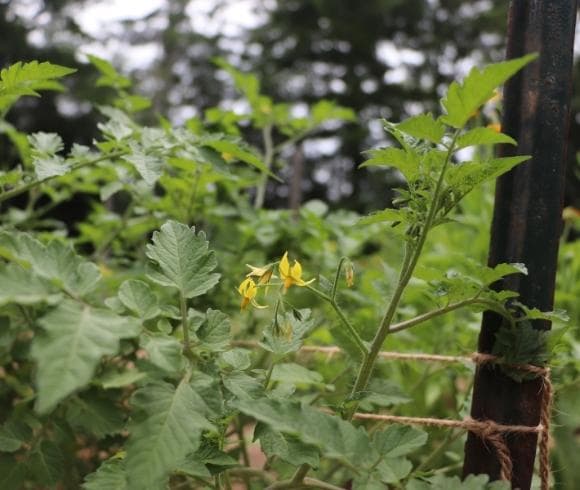
DETERMINATE TOMATOES
Determinate tomatoes, aka “bush” varieties are those tomato varieties that stop growing at about 3 feet tall, similar to, well, a bush 😊
Determinate varieties offer …
- Less maintenance as they need no staking or support during the growing season other than a typical tomato cage
- Ripen and come to maturity pretty much all at once (great for preserving purposes)
- Make great choices for those with short growing seasons
- Require little to no pruning other than removing a few leaf branches to improve air circulation
- Tend to be fairly resistant to disease
- Make a great choice for growing in containers
INDETERMINATE TOMATOES
Indeterminate tomatoes grow tall. Really tall. Like 5-6 feet plus tall. Although they need a bit of support, they do produce continually and offer other benefits as well.
Indeterminate varieties offer …
- Continual fruit development until frost
- Require staking & support (if left to their own devices, indeterminate tomato plants will sprawl on the ground increasing the likelihood of developing disease)
- Require pruning
- Can grow undercover (with enough head room) to lengthen a productive harvest
- Can be grown in pots and containers with the right support
DO PLANT THE RIGHT TOMATO VARIETY FOR YOUR GARDEN ZONE
Again, by reading your seed packets, understanding your gardening zone, and purchasing either the appropriate seed or plant that suits your area and climate, you are setting yourself up for tomato success!
In addition to planting the right variety for your area, be sure to plant several varieties to enjoy. My favorite tomato sauce recipe is made all the better from using a variety of tomato flavors!
DO CONSIDER AGE WHEN PURCHASING TOMATO PLANTS
I know. It’s counterintuitive. When purchasing tomato plants from your local farmer or nursery, stay clear of plants that are already flowering.
WHAT? Yup, you heard correctly. It may seem as though you will be further along in reaping a nice ripe tomato, but in fact, you may actually be hindering the ultimate harvest.
HOW? It takes time for plants roots to become established enough to create further flowering when transplanting. So be patient. It takes time to grow healthy, established roots. Encourage the plants energy into creating that foundation initially.
Should your only option be a plant that’s flowering, simply pinch any existing flowers off to help it do just that, send its energy into creating strong roots which will in turn promote greater harvest yields.
DO CONSIDER YOUR CLIMATE
Again, consider your climate, aka garden hardiness zone, when choosing your tomato variety.
Should you not already know your hardiness zone, you can check yours with just your zip code HERE.
COOL WEATHER CLIMATE
For example when living in a cooler climate choose varieties like “Black Prince” (taking only a bit more than 2 months to mature) or “Bush Beefsteak” (taking 85 days to mature). These early tomatoes will allow the fruit to ripen in the time allotted. Cherry tomato varieties would also be good choices for cool weather climates.
Referring to your seed packet information, note the “days to maturity” to determine if your climate offers a long enough growing season for the variety you are considering.
HOT CLIMATES
Should you reside in a warmer, hotter climate, best if you stick with those varieties that are considered “heat-tolerant”.
A few good heirloom options are “Black Krim”, “Brandywine”, and “Cherokee Purple”, all great heat-tolerant choices.
DO CHOOSE A PROPER PLANTING LOCATION
Whether you are propagating herbs for an existing herb garden , planning a medicinal herb garden, or looking to grow an edible garden, location matters. And by location I mean sunlight exposure.
Tomatoes require a minimum of 6 hours of sun but prefer a good 10+ hours of direct, full sunlight exposure daily throughout the growing season (summer months).
HINT: Should your growing area need additional light exposure, consider planting in front of a reflective barrier. Use something shiny such as a whitewashed old door, or white sheet positioned so any sunlight is reflected back onto the plants.
Should you reside in a hot climate, however, tomatoes will do ok with being planted in part sun (dappled) conditions.
CAN TOMATOES GET TOO MUCH SUN?
Although tomatoes do like quite a bit of direct sun, there are times when too much sun can turn into too much of a good thing for this sun-loving plant.
Indications your tomato plants are receiving too much light or sun, especially during excessively hot weather is an issue called “sunscald”.
Fruit effected by sunscald will show area’s that are lighter green in color on the side of the fruit facing the sun. These lighter green patches can eventually turn to a light grey color with blistering which can then turn to black mold.
Are the fruit effected by sunscald still edible? Yes, as long as it has not developed into black mold.
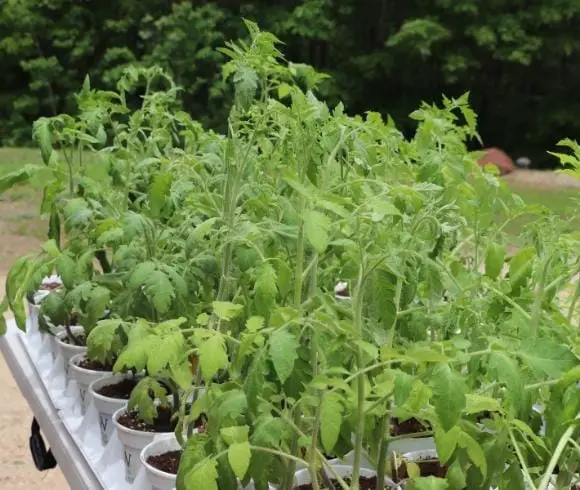
DO PLANT PROPERLY
Although not difficult, there are a few do’s when it comes to planting your tomato plants.
DO PREPARE YOUR SOIL
Plants are only as healthy as the soil they are grown in. Tomatoes thrive in well amended soil that’s well-draining.
The soil pH should be on the slightly acidic side ranging from 6.2 to 6.8. Too much nitrogen in your soil can result in leaf production and little to no fruit development.
It’s alway’s a good idea when in question to have your soil tested at your local state extension office. Alternatively, you can pick up a soil tester to get an idea of your soils condition.
DO CHECK SOIL TEMPERATURE
Temperature is important when planting & growing your tomato crop. Ideally, tomatoes enjoy a soil temperature of 65°F to 70°F, but will tolerate a minimum soil temperature of 60°F.
Night air temperatures should remain at a constant 60°F or warmer and should not fall below 55°F as pollen will not form properly.
Alternatively, temperatures of 95°F and above will damage existing flowers and not produce fruit.
Should you need to warm your soil up a bit, you could simply turn the soil in your planting area so that it can be warmed by the sun.
Or you may want to consider laying down some black plastic for a bit to trap as much heat & encourage a rise in soil temps.
Or you could create your own mini greenhouse by utilizing floating row covers, garden cloche(s), or cold frames.
Alternatively, should you need to be concerned with your soil getting too warm & need to cool the soil, consider planting in dappled shaded area, give the soil a deep watering, & mulch deeply.
DO HARDEN TOMATO SEEDLINGS OFF
Be sure to harden off any tomato plant prior to planting. This includes both purchased plants and those that you grow from seed.
To “harden off” simply means to get the plants acclimated to the environment in which they will be planted.
To harden off …
- Ten days prior to planting, or thereabouts, set your tomato plants outdoors in filtered light and protected from strong winds, for about an hour. Place back into shaded & sheltered area
- Repeat the above, increasing the light exposure (eventually to full sun), time, and wind for about 7 days until fully exposed to the elements
- Once nighttime temperatures remain approximately 55°F, your hardened plants can be safely left out overnight
- Water more frequently during the hardening off stage. Seedlings dry more quickly outdoors than when they are indoors.
DO TRANSPLANT APPROPRIATELY
After all danger of frost has passed & soil temps have reached 60°F or thereabouts, it is typically safe to transplant your tomato plants into your outdoor space/garden.
TOMATO TRANSPLANT SPACING REQUIREMENTS
Ideal spacing for your plants largely depends on the growth habit of your chosen variety.
Determinate varieties, or bush type plants, should be planted 12 to 24 inches apart in rows that are 4 to 6 feet apart.
Indeterminate varieties, those that are typically high in growth heights, should be planted 18 to 24 inches apart in rows at least 5 ft apart when they are staked or caged. Those that are allowed to sprawl and remain unstaked should be planted 2 to 3 ft apart in rows that are 5 to 7 feet apart.
HOW TO TRANSPLANT TOMATOES
When transplanting your tomatoes, dig a hole that is twice the size of the root ball of the plant itself, making sure you’ve added plenty of organic matter far in advance of planting time.
As a general rule of thumb, plan on adding organic aged compost or aged manure (don’t be stingy here!) about 2 weeks prior to planting, turning it in well.
Follow these tips for transplanting your tomato plants.
- Optional: Soak your entire tomato plant in “brown water” or diluted liquid kelp prior to planting for at least 5 to 10 minutes. Don’t be concerned if the leaves are submerged, they will absorb a bit of the nutrients being offered. The roots will plump and soak up all the vital nutrients this fertilizer has to offer and your plants will be fed and happy
- Plant deeply and as our forefather’s would say, “up to their necks” to encourage strong root growth as their root systems develop along their stems
- With leggy tomatoes, don’t be afraid to plant sideways. Dig an angled trench, lay the plant on its side allowing soil underneath the plant to support the fragile stem and cover with soil up to the first few sets of leaves
- Add a teaspoon or two of Epsom salts in the bottom of the hole prior to placing your plant into it. The magnesium offered by the salts will have your tomato plants doing the happy dance if they are in need of it
- Back fill the soil, making sure the entire root ball is well covered
- If your plants have been grown in peat pots, be sure to peel the rim of the pot back and make sure the entire pot is buried when backfilling. Exposed peat pot will wick moisture away from your plant and soil
- Place your stakes or cages into the soil prior to planting so that any roots are not damaged should you be placing it after the plant has been planted
- Pinch any buds or flowers that are existing on the plant to encourage the energy to be directed toward establishing a healthy root system initially
- Water deeply once planted, adding a diluted fertilizer if desired. I recommend watering with “brown water” made from liquid kelp. Further info on the benefits of using seaweed in the garden can be found by clicking the link
- Mulch with your favorite mulching method to conserve water & keep soil-borne disease issue’s from arising.
DO REMOVE BOTTOM LEAVES
Once your tomato plants have grown several feet, remove the oldest leaves at the bottom of the plant. These are the leaves that can develop fungal issues first.
By removing them at the stem, soil borne pathogens are largely prevented as water cannot splash up from watering or rain.
DO PLANT YOUR TOMATOES NEAR THESE PLANTS
Companion planting or plant partnering is a thing. A thing that allows nature to work for you by allowing the plants to feed one another, to deter pests, reduce weeds, and improve soil fertility.
When planting tomatoes consider planting the following near or next to them …
- To deter yellow-striped armyworms, plant thyme to create not only a deterrent, but also a living mulching system
- Plant cowpeas to lure stink bugs away
- Collards will help deter harlequin bugs
- Radish will lure flea beetles away when planted adjacent to your tomato plants
- Basil plants are a great option to keep thrips and hornworms at bay
- Dill will help lure beneficial insects near
- Fennel will attract a diverse array of beneficials
- Oregano when allowed to flower attracts pest-eating beneficials
- Cilantro blooms are a valuable and attractive nectar source for common tomato pests
- Sunflowers attract pollinators
- Calendula attracts pollinators that feed on unwanted pests
This is by no means an exhaustive list. I encourage you to experiment & research what would work best for any issue’s you may be having in the garden!
Manage & Track Your Garden Year-To-Year!
DO RELAX & ENJOY THE PROCESS OF GROWING TOMATOES
At least that’s what I tell myself every growing season 😂 First and foremost, relax and enjoy the harvest. The fruit of your labor is sweet indeed.
And when you have too many tomatoes (and by that I mean bushels), consider preserving your harvest, or rinsing the tomato whole and freezing if you have the space. Or maybe share the wealth with a needy neighbor or food pantry.
DON’TS OF GROWING TOMATOES
There are a few tips suggestions of what you want to avoid when growing tomatoes. The “don’ts” if you will.
DON’T PLANT TOMATOES AFTER THESE PLANTS
Crop rotation should be monitored year-to-year to be certain that your tomato beds are not being planted in an area that was used to grow plants in the nightshade family prior.
These plants include tomatoes, potatoes, eggplant, and peppers, all of which are Solanaceous.
DON’T PLANT TOMATOES NEAR THESE PLANTS
There are a few plants which should not be planted NEAR tomatoes each growing season. These include plants from the Brassicas family which include broccoli and cabbage.
These plants share a tendency to develop the same diseases & issues as tomatoes. As we certainly don’t want to attract or encourage any issues, avoid concentrating these plants in the same area of your garden.
Not to mention both tomatoes and brassicas are considered heavy feeders and may compete for the same nutrients and resources available.
Avoid planting corn (tends to attract tomato fruit worm and ear worms), kohlrabi (said to inhibit tomato growth), potatoes (increased chance of blight issues), and fennel (said to effect tomato plant growth).
DON’T PLANT TOMATOES & THEN IGNORE THEM
Although tomato plants are pretty easy growers, needing little upkeep, there are a few general maintenance tasks that should be, well, maintained.
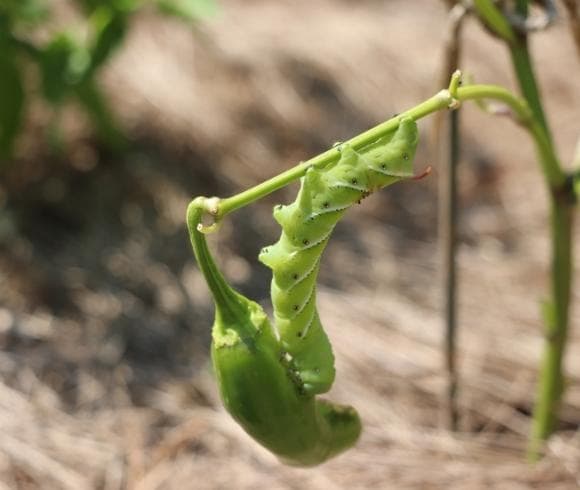
- PRUNING – Selectively removing a bit of plant growth can aid in improving & prolonging the harvest and reduce disease. How you prune really depends on whether the plant is determinate or indeterminate. UNH extension has a great fact sheet on Pruning Tomatoes which I’ve linked 😊
- DISEASE – Be proactive and watch your plants for signs of early disease (blight, blossom end rot, etc) & consider using organic methods of treatment
- WATERING – Don’t overwater or under-water your tomato plants. Strive to find that “just right” amount. Tomatoes enjoy a deep watering that is accomplished slowly. Typically in most environments, tomatoes require approximately 1 to 1.5 inches of water per week. Tomatoes prefer deep watering that is done infrequently. However, there are exceptions. With newly planted tomatoes, plan on watering daily in the morning. Those in hot weather climates, or if experiencing a heat wave, plan on watering 2x per day if needed. Should you be growing your tomatoes in containers, plan on watering 2x per day if needed
- PESTS – Don’t ignore the tell-tale signs of pest issues, especially tomato hornworm. When gardening organically, hand pick these little buggers into a jar and feed them to your chickens if you have them. And they are not limited to just your tomatoes as you can see by the image shown above! Horn worm caterpillars can easily decimate your entire tomato crop in a very short time. They are difficult to see and find so be on the lookout for top branches that have been stripped clean of leaves, and fresh manure droppings to help you trace where they are located. If all else fails, utilize a blacklight, take a stroll after dark, and they will light up like a Christmas tree 😊
DON’T WATER FROM ABOVE
Refrain from watering via a sprinkler system or hose where the you will be watering from above. With tomatoes, watering from above will promote disease.
Instead, water via a soaker hose or drip irrigation (conserves water!), or direct your hose to the base of the plant where it meets the soil trying not to splash up onto the plant itself.
DON’T OVER FERTILIZE TOMATOES
There is such a thing as killing your plants with too much love 😅 Finding that sweet spot of fertilizing is key to healthy productive plants.
This is especially true when using commercial fertilizers. Too much fertilizer will produce nothing but green. As in leaves. Not the goal here thank you very much. It can also lead to blossom end rot issues.
Be sure to follow the do’s of how to transplant your tomatoes found above. Thereafter, plan on feeding your tomato plants lightly every 1-2 weeks until the first frost.
Again, I highly recommend using liquid kelp for this and have never had an issue with over fertilizing my plants using it.
DON’T CROWD
Tomatoes although fairly small when young, grow quickly and enjoy room to breathe freely.
Tomato plants when planted too closely together can be difficult to manage (although it can certainly be done with appropriate trellising), can increase disease issues, and can stunt plant growth.
DON’T FORGET TO DEFEND AGAINST DISEASE
We’ve all seen them. Tomato plants come mid-growing season that look like the black plague has visited. Knowing the signs and taking preventative steps against disease & issues will help keep your plants as healthy as possible.
- BLIGHT – Blight issues are real. This disease can destroy your tomato crop in no time flat. Be sure you’ve selected varieties that have been grown to resist this disease, rotate your crops as stated above, give a good amount of space between plants to create as much beneficial air-flow as possible, mulch to prevent splash-ups, water from below, and as a last resort, plan on treating organically with a copper fungicide
- BLOSSOM END ROT – Commonly blossom end rot is caused by irregular watering which prevents the plant from absorbing nutrients properly. In addition, this issue is largely due to lack of calcium in the soil itself. To give your plants an added boost of calcium it needs to prevent this issue, plant eggshells. Yup, you heard right. Eggshells that have been sterilized by placing washed and dried shells into a warm 250°F oven for about 20 to 30 minutes. Grind the sterilized eggshells and aim for the addition of about 2 eggshells per hole when planting. Alternatively, dissolve the eggshell powder into water and then water deeply
- BE ON THE DEFENSIVE – Be proactive against tomato disease with the use of aspirin! As tomatoes natural defense against disease is a hormone similar to salicylic acid which helps the plant stimulate its defense system = SAR or “systemic acquired resistance”. Like tomatoes, aspirin’s salicylic acid mimics this response. By prompting & guiding your tomato plant’s SAR defense before any threat of disease or issues occur will hopefully prevent those issue’s from even occurring
By following these few do’s and don’ts for growing tomatoes, you should be well on you way to an amazing tomato harvest!
Do you have further growing tomato do’s and don’ts suggestions?
Love, Light, & Laughter ~

SHOP THIS POST
Enjoy this article? Please consider sharing it on your favorite social media channel! Want more? Subscribe below for the occasional update with all the “happenings on the hill”!
May Be Of Interest …
- How To Sanitize Seed Trays
- How Often To Water Tomato Plants
- Winter Sowing In Milk Jugs
- How To Appliqué
- What Food Group Are Eggs In

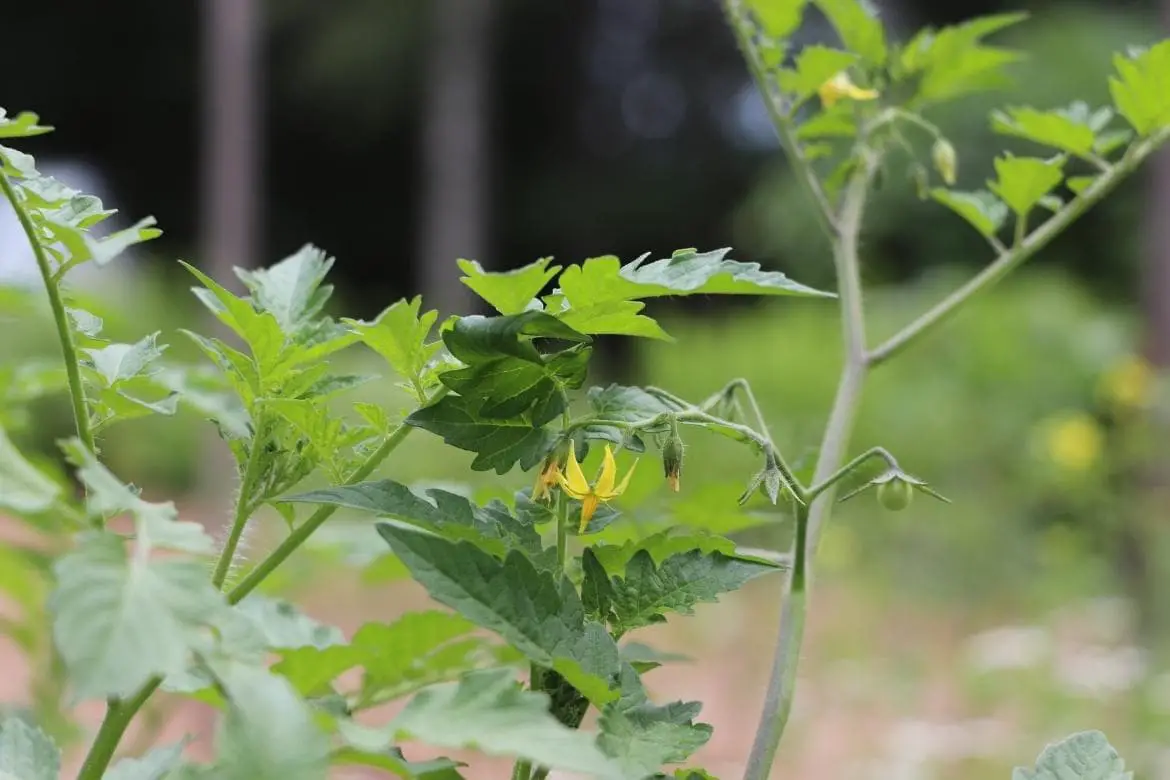

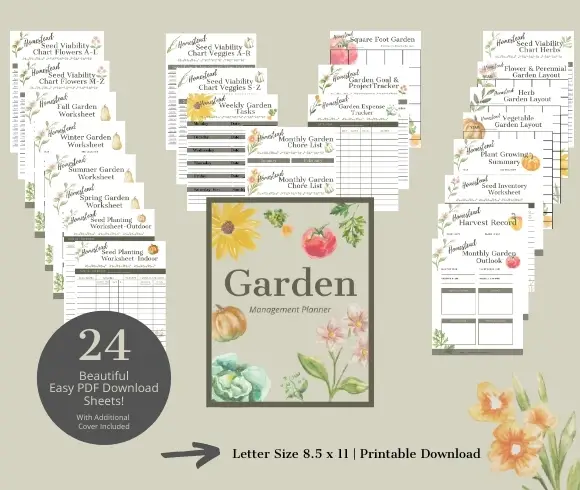
16 comments
I must have had Indeterminate tomatoes because they grew taller than me on my chain link fence. I actually had my gardeners help me take it down when it was ready because it grew so big! But my neighbors and I all enjoyed the fruit for many months from that plant. But those green caterpillars are totally no joke. And they’re massive. Definitely entertained my kids when we found one! I miss having tomatoes, so hopefully I’ll plant them again!
Great guide for growing tomatoes! They are my favorite vegetable garden plant.
I have found keeping a hanging plant of cherry/grape tomatoes handy is the best way that we enjoy the tomatoes easily in our dinner. I keep it simple and easy and it works for us without a huge time commitment!
Now my Mother keeps a HUGE garden, grows several varieties and cans for all. We are spoiled!
You certainly are spoiled & good for you! So happy you’ve found what works for you in the space you have! Happy growing!!
There are several tips I will start utilizing this year like doing more bush varieties and not overcrowding 🙂
Great tips, but I’m confused. Did it say not to plant tomatoes where tomatoes have been planted before? (Don’t plant tomatoes after these plants)
Yes, you read correctly. Not only are tomatoes heavy feeders, when planted in the same location year-to-year you can increase risk of disease(s).
However, this is not a hard and fast rule, and I know many who plant in the same location each year. Should you need to, I would recommend rotating your placement at least every two years to allow the disease(s) which may be soil ridden to die off. In addition, I would recommend amending the soil with LOTS of organic matter each year.
Happy Growing!
This is a post packed with tomato-growing information!! I do not have a green thumb, but my husband and kids enjoy gardening in the summer and tomatoes are my husband’s favorite. I’ll have to send him this post.
There is nothing better than a home grown tomato! I’m going to mix my basil in among the tomatoes to keep the hornworms away. Thanks for the tip!
Wonderful! There are many companion plants that help keep pests away from tomatoes!
Thanks, Sue! This was very informative. I’m Looking forward to start our first family garden this Spring. I’m sure, I will come back to this post to check again you recommendations. We love tomatoes.
How exciting for you, Cecile! Let me know if you have any questions along the way 🤗
This is so helpful! Now I know why my tomatoes died last year lol
This reminds me of the days my siblings and I helped our mother plant tomatoes, garden eggs, peppers and other vegetables. It was a lot of work but I so enjoyed when they fruited; evidence of our hardworking and dedication.
Wow, this is amazing information! So much great advice for planting tomatoes.
I always hate it when my husband pinches off the blossoms on then new plants! I understand why, but it’s hard to watch!
I’m going to try to remember about the ASA.
This was very thorough! Thank you so much for putting all of this into this post and for sharing it at the Homestead Blog Hop!
Pinning it.
Laurie
Ridge Haven Homestead